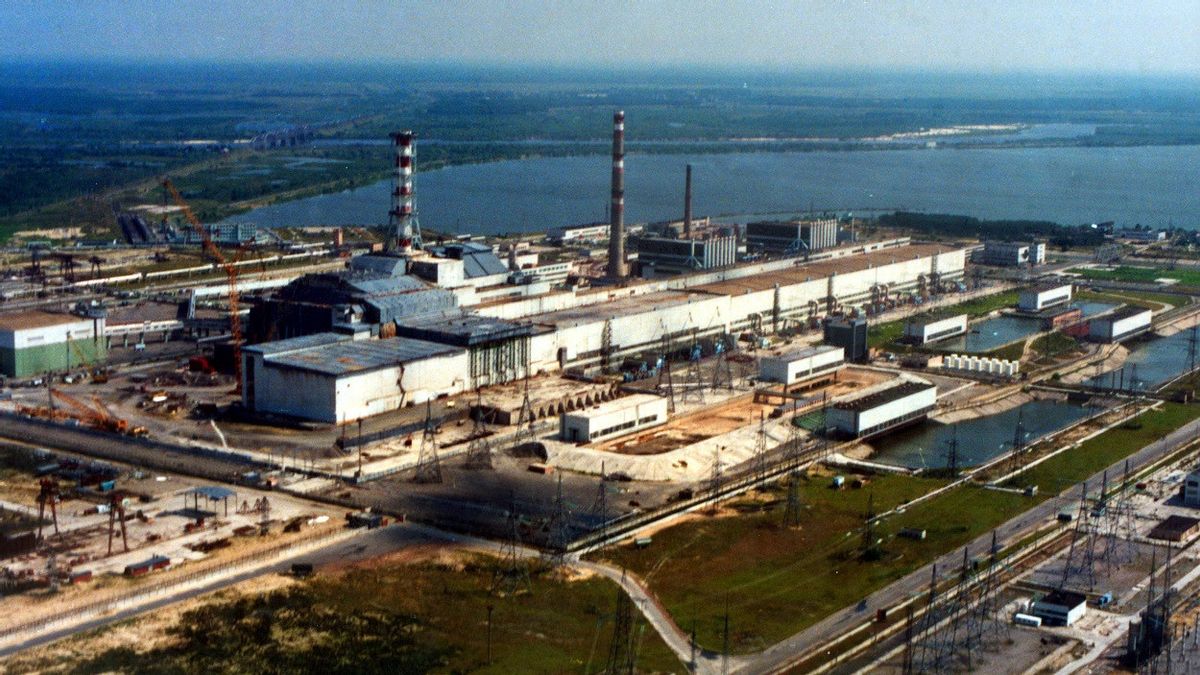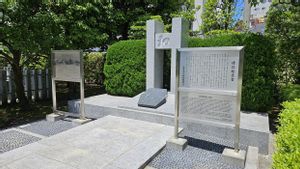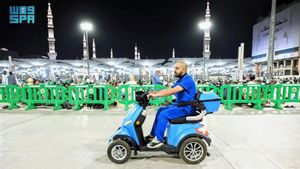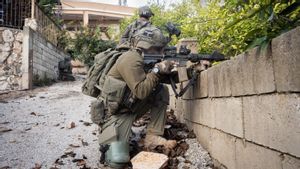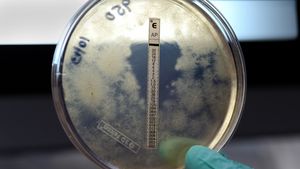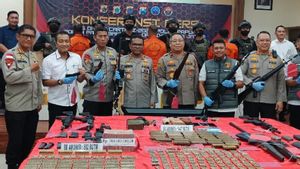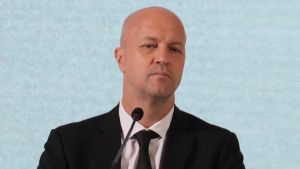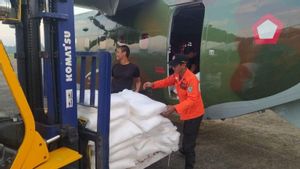JAKARTA - Russian soldiers who seized the site of the Chernobyl nuclear power plant disaster, drove their armored vehicles without radiation protection, through a highly toxic zone called the 'Red Forest', breaking through a cloud of radioactive dust, workers at the site said.
Both sources said the soldiers in the convoy were not using anti-radiation equipment. A second Chernobyl employee said it was 'suicide' for the soldiers, as the radioactive dust they inhaled would likely cause internal radiation in their bodies.
Ukraine's state nuclear inspectorate said on February 25 there had been an increase in radiation levels at Chernobyl as a result of heavy military vehicles disturbing the ground. But until now, the exact details of what happened have not been revealed.
Two Ukrainian workers who spoke to Reuters were on duty when Russian tanks entered Chernobyl on February 24 and took over the site, where staff are still responsible for the safe storage of spent nuclear fuel, as well as overseeing the concrete-encased remains of the reactor that exploded in 2017. 1986.
The two men said they had witnessed Russian tanks and other armored vehicles moving through the Red Forest, which is the most radioactively contaminated part of the zone around Chernobyl, about 100 km (65 miles) north of Kyiv.
The Russian military said after taking control of the plant, radiation was within normal levels and their actions prevented a possible "nuclear provocation" by Ukrainian nationalists. Russia has previously denied its forces placing nuclear facilities inside Ukraine in jeopardy.
The site got its name when tens of square kilometers of pine trees turned red, after absorbing radiation from the 1986 explosion, one of the world's worst nuclear disasters.

The large area around Chernobyl is off limits to anyone who doesn't work there or has a special permit. However, the Red Forest is considered highly contaminated, with nuclear plant workers not even allowed to go there.
A Russian military convoy passed through the zone, the two employees said. One of them said to use the damaged road.
"A large convoy of military vehicles was driving along the road just behind our facility, this road passes through the Red Forest," said one of the sources.
"The convoy washed away a large column of dust. Many radiation safety sensors indicated levels were exceeded," he continued.
Valery Seida, acting general director of the Chernobyl plant, was not there at the time and did not witness the Russian convoy entering the Red Forest, saying he had been told by witnesses Russian military vehicles speeding everywhere around the exclusion zone, could have passed through the Forest. Red.
"No one went there, for God's sake. No one was there," Seida told Reuters.
He explained that workers at the factory told Russian service personnel they should be careful about radiation, but he didn't know the evidence they were paying attention to.
"They drive wherever they want," said Seida.
After the Russian troops arrived, the two factory employees worked for nearly a month with their colleagues, until they were allowed to leave last week when the Russian commander allowed some staff replacements to be sent. Reuters was unable to independently verify their accounts.
They were interviewed by telephone on Friday on condition of anonymity, as they feared for their safety. The following day, Russian troops captured the town of Slavutych near Chernobyl, where most of the factory workers lived.
Seida and the mayor of Slavutych said on Monday that Russian troops had now left the city.

Reuters was unable to independently determine radiation levels for people near the Russian convoy entering the Red Forest.
During their stay at the Chernobyl compound with the Russian soldiers, they said that none of the Red Bear Country's soldiers used equipment that would protect them from radiation.
Specialists from the Russian military who are trained in dealing with radiation did not arrive on the scene until about a week after Russian troops arrived, workers said. They said Russian specialists were also not wearing protective gear.
One of the employees said he had spoken to several Russian servicemen at the factory.
"When asked if they knew about the 1986 disaster, the explosion of the fourth block (the Chernobyl plant), they didn't know. They didn't know what kind of facility they were in," he said.
"We talked to regular soldiers. All we heard from them was 'This is very important infrastructure'. That's all," said the man.
Separately, Ukraine's Exclusion Zone Management Agency said on Feb. 27 that the latest records it had on sensors near nuclear waste storage facilities, before losing control of monitoring systems, showed the absorbed radiation dose was seven times higher than normal.
Meanwhile, the International Atomic Energy Agency (IAEA) said on February 25, radiation levels at the Chernobyl site reached 9.46 microsieverts per hour, but remained 'within operating range' recorded in the exclusion zone from the time of its creation, posing no threat to the general population.
The safe level, according to IAEA standards listed on the agency's official website, is up to 1 millievert per year for the general population and 20 millisievert per year, for those dealing with radiation professionally, where 1 millievert is equal to 1,000 microsieverts.
On March 9, the IAEA said it stopped receiving monitoring data from the Chernobyl site. It did not respond on Monday to the workers' allegations.
To note, the Chernobyl exclusion zone is still considered by the Ukrainian authorities to be dangerous. Entering a disaster site without permission is a crime under Ukrainian law.
The English, Chinese, Japanese, Arabic, and French versions are automatically generated by the AI. So there may still be inaccuracies in translating, please always see Indonesian as our main language. (system supported by DigitalSiber.id)
